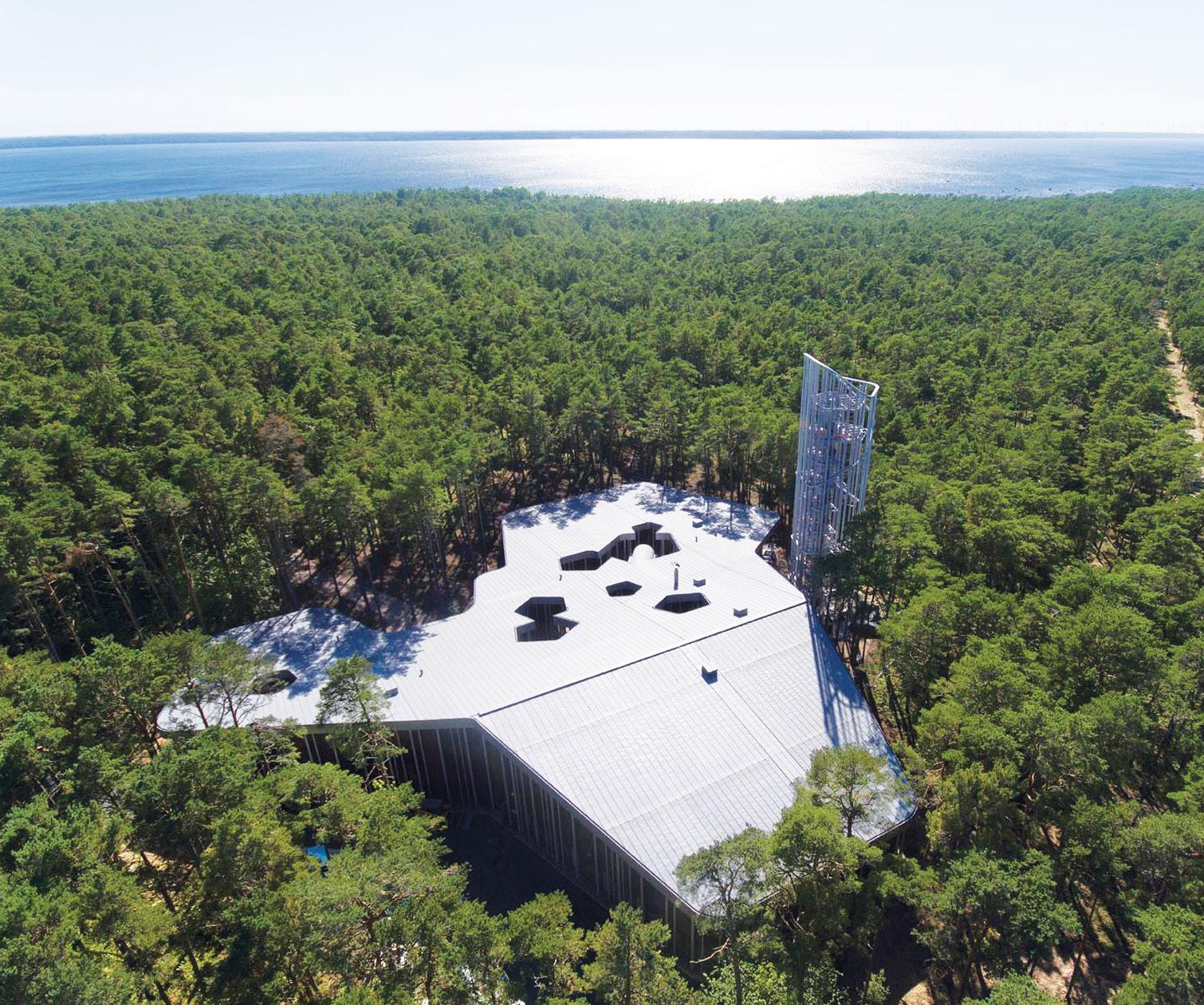
1 minute read
Architecture Integrated with Nature: Comparing the Arvo Pärt Centre and Vancouver’s VanDusen Botanical Garden Visitors Centre
VINCENT TEETSOV
With issues of population growth and the encroachment on natural environments occurring simultaneously, architects are at the forefront of constructing our world in a brand new way, so that we can continue to be productive and also take care of the environment that sustains us.
Advertisement
In both Canada and Estonia, there are vast swathes of untouched land. 80% of Canada is uninhabited. 55% of Estonia is uninhabited. While it is unlikely that this space will suddenly be occupied any time soon, biophilic concepts are increasingly applied in the sustainable development of public spaces and dwellings, to directly or indirectly integrate people with nature.
The Arvo Pärt Centre, located half an hour west of Tallinn, was designed with these very concepts in mind. Trees surround the Centre, creating a continuing sense of structure from the inside of the building outward. There isn’t a harsh division where the building begins. Whether visitors are conducting research or attending a concert, their indoor experience is in the same line of sight as the habitat outside, and vice versa.
Just as there are no 90 degree angles in the natural world, Spanish architectural firm Nieto Sobejano Arquitectos did not use any right angles in their creation. That said, the vertical precision of columns within the building emulates the stark, upright appearance of surrounding trees.
The landscaping of the Centre’s grounds is not overly manicured and access is given to those said trees. The architects have keenly observed the value of this relationship to land in Estonian culture, just like they recognized the grounding psychological importance of seeing water and open sky with the inclusion of a tower.
Nieto Sobejano Arquitectos has written about not including an obvious beginning or end in the building, and this non-imposing quality reflects the way both Arvo Pärt’s music and a forest works. On a social level, visitors are allowed to experience the beautiful forest and Arvo Pärt’s music without exterior influence.
(Full story available via link below)

Photo: https://perkinswill.com/project/vandusen-botanical-garden-visitor-centre/










